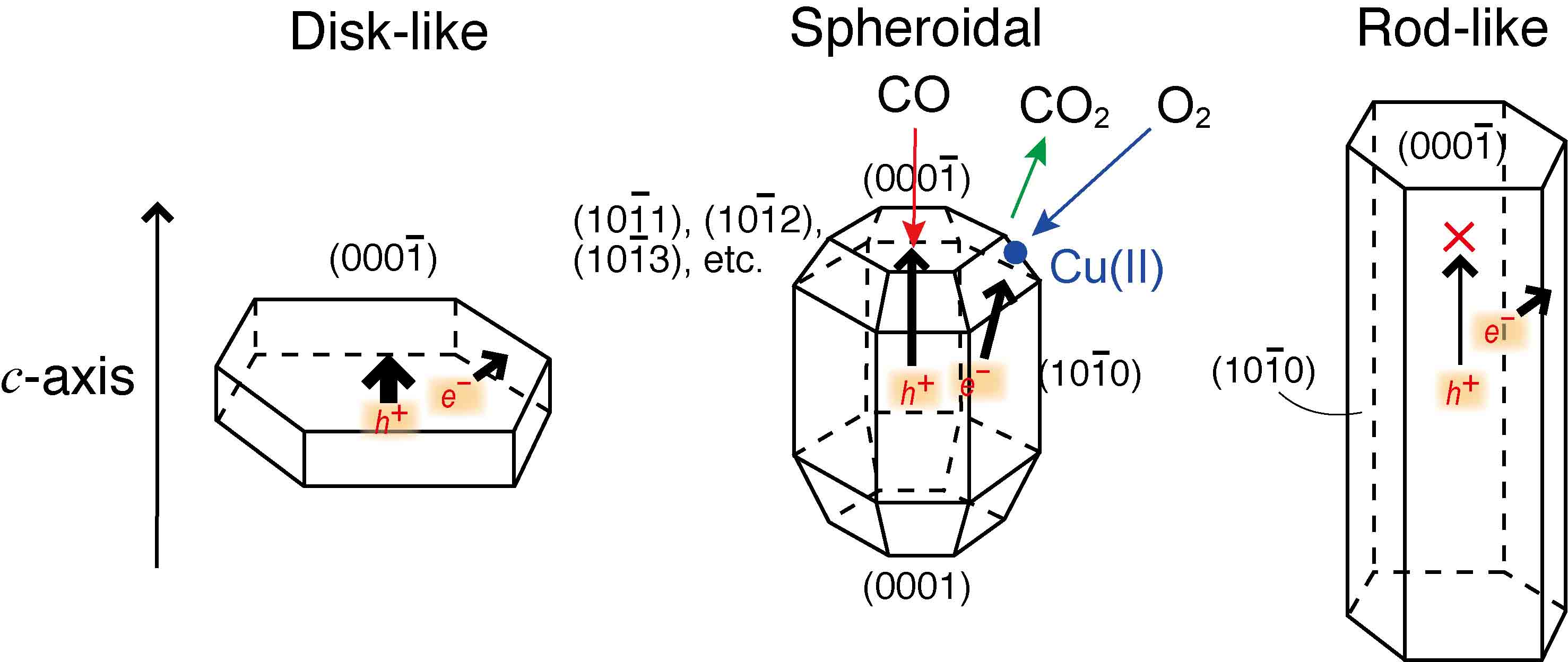|
Preferential Photooxidation of CO in Hydrogen across the Crystalline Face Boundary over Spheroidal ZnO Promoted by Cu Ions
|
Yusuke Yoshida, Takaomi Itoi, and Yasuo Izumi
Journal of Physical Chemistry C, 119(37), 21585–21598 (2015). DOI: 10.1021/acs.jpcc.5b07240.![]() [The
PDF file]
[The
PDF file]
The design and synthesis of nanoscale zinc oxides (ZnOs) and their applications to photocatalysis are widely explored. However, the photocatalytic controls needed to design appropriate crystalline faces and promoter sites for each catalytic reaction step using ZnO have been rarely reported. This study optimized photocatalytic hydrogen purification using the preferential oxidation (PROX) of CO impurities among nanoscale disk-like, spheroidal, and rod-like ZnO promoted by adsorbed Cu ions. Four key factors were examined: (1) the diffusion length to the surface of separated electrons and holes induced by light; (2) the crystalline face where formate was formed from CO and its stability; (3) the crystalline face where Cu ions adsorbed for trapping electrons and reducing O2; and (4) the frequency factor of "charge recombination as cations and anions" derived from photogenerated holes and electrons, respectively, at the boundary of crystalline faces. The optimal photocatalyst for hydrogen purification (CO PROX) was determined to be Cu-spheroidal ZnO. An efficient photocatalytic cycle was obtained by increasing the frequency factor between unstable unidentate formate on the (0 0 0 -1) face and Cu ions adsorbed on neighboring unsaturated {1 0 -1 1} faces.

Chiba University > Graduate School of Science > Department of Chemistry > Dr. Yasuo Izumi Group